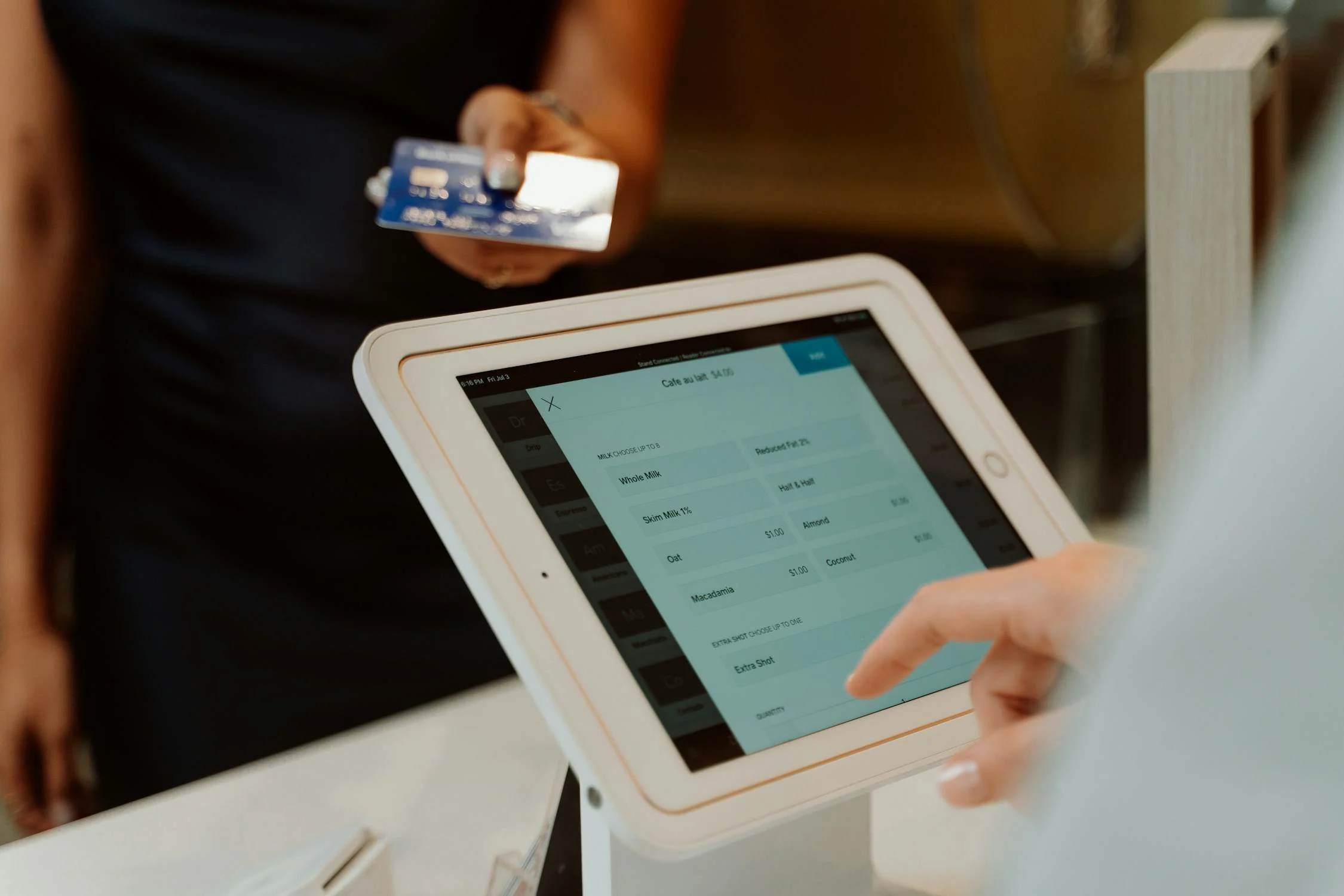How One FQHC Used Automation to Reduce Administrative Burden

Key Points
- Research suggests that modernizing FQHC operations can improve efficiency using automation and data analytics.
- It seems likely that automation tools like AI scheduling and automated billing reduce staff burnout and errors.
- The evidence leans toward data analytics, such as UDS data, supporting better decision-making and resource allocation in FQHCs.
- Real-world examples show FQHCs improving efficiency through technology, though specific outcomes vary.
Introduction
Federally Qualified Health Centers (FQHCs) are vital for providing primary care to underserved communities, but they face challenges like rising patient volumes and limited funding. Data from the Health Resources and Services Administration (HRSA) indicates that patient numbers grew from about 24.3 million in 2015 to over 25 million in 2020, highlighting the need for modernization to enhance efficiency [1][2]. This blog post explores strategies like automation and data analytics to help FQHC leaders streamline operations and improve patient care.
Automation Tools
Automation can save time and reduce errors in FQHCs, particularly in scheduling and billing. AI scheduling, as seen in solutions from Veradigm and Hyro, forecasts demand to minimize wait times and reduce no-shows, with Hyro reporting a 47% increase in appointments for Weill Cornell Medicine [3][4]. Automated billing, with a 98% first-pass clean claims rate from Veradigm, streamlines revenue cycles and reduces administrative burdens [5]. Automating patient feedback, as with Simple Interact, achieved a 7% participation rate, enhancing efficiency [6]. These tools also reduce staff burnout by freeing time for patient care.
Data Analytics
Data analytics, using UDS data, supports FQHC decision-making by analyzing patient demographics, clinical outcomes, and finances. It helps identify at-risk populations, improve chronic disease management, and optimize resource allocation. For example, tracking quality measures can enhance care, while financial analytics aids budgeting. General healthcare insights show analytics reducing hospital readmissions by 35% and mortality by 30%, applicable to FQHCs for better outcomes [7].
Real-World Examples
Two FQHCs illustrate efficiency gains. A California center implemented data quality programs and predictive scheduling, capturing $400,000 in unbilled revenue and boosting net margins from 2.1% to 13.2% [8]. Salud Family Health Centers in Colorado used automated text outreach, scheduling 1,556 additional appointments monthly, reducing staff workload [9]. These cases show technology's impact on efficiency.
Survey Note: Modernizing FQHC Operations: Strategies for Efficiency in a Changing Landscape
Introduction
Federally Qualified Health Centers (FQHCs) are community-based health care providers funded by the HRSA Health Center Program to offer primary care services in underserved areas, serving patients regardless of ability to pay and adhering to a sliding fee scale. These centers face significant operational challenges, including rising patient volumes and limited funding, which necessitate modernization to enhance efficiency and sustain quality care. According to a study published in PMC, FQHCs served approximately 24.3 million patients in 2015, growing to over 25 million by 2020, despite disruptions from the COVID-19 pandemic, underscoring the increasing demand [1][2]. This article, aimed at educating FQHC leaders, explores practical, solution-oriented strategies to improve efficiency through automation tools and data analytics, with real-world examples and a downloadable resource for assessment.
Automation Tools: Enhancing Efficiency and Reducing Burnout
Automation tools offer significant potential to streamline operations in FQHCs, saving time, reducing errors, and alleviating staff burnout, which is critical given the high patient volumes and limited resources. The focus is on automating routine tasks to allow staff to concentrate on patient care, addressing challenges like manual scheduling and billing that can lead to inefficiencies and errors.
One key area is AI scheduling, which uses predictive analytics to optimize appointment slots and improve patient access. Veradigm's Predictive Scheduler forecasts patient demand, minimizing wait times and enhancing satisfaction, while also managing complex scheduling rules to ensure compliance and reduce no-shows [3]. Hyro's AI-powered scheduling platform, designed for healthcare, enables patients to book appointments across web, mobile, and SMS, reducing call center burdens and improving efficiency, with a case study showing Weill Cornell Medicine increasing scheduled appointments by 47% [4]. These tools prioritize high-need patients, adjust schedules in real-time, and optimize provider capacity, directly reducing administrative workload and staff stress.
Another critical area is automated billing, which streamlines revenue cycle management (RCM) to ensure prompt and accurate payments, minimizing claim rejections. Veradigm's RCM software achieves over 98% first-pass clean claims, significantly reducing the time spent on error correction and resubmissions, which is vital for FQHCs operating under tight budgets [5]. This automation improves cash flow, reduces administrative burdens, and supports financial sustainability, allowing staff to focus on patient care rather than billing disputes.
Additionally, automating patient feedback collection enhances engagement and provides insights for quality improvement. Simple Interact's automated survey process, implemented at Lamprey Health Care, achieved a 7% patient participation rate and obtained a large sample size within days, enabling efficient reporting for grants and certifications [6]. This automation reduces the high costs and delays associated with manual processes, transforming the experience for both patients and staff, as noted by testimonials from Lamprey Health Care leadership.
The benefits extend to reducing staff burnout, a significant issue in healthcare. By automating repetitive tasks like scheduling and billing, FQHCs can free up staff time, allowing them to focus on delivering high-quality care, improving job satisfaction, and mitigating the risk of burnout, which is particularly important given the demanding nature of serving underserved populations.
Data Analytics: Supporting Decision-Making and Resource Allocation
Data analytics is a powerful tool for FQHCs to support decision-making and optimize resource allocation, leveraging data from the Uniform Data System (UDS) and other sources. UDS, a standardized reporting system, requires FQHCs to annually report data on patient characteristics, services provided, clinical processes, health outcomes, staffing, costs, and revenues, providing a comprehensive dataset for analysis.
Analyzing UDS data allows FQHCs to identify trends and understand the needs of their patient population, which is crucial for serving medically underserved communities. For instance, examining patient demographics can reveal the prevalence of chronic conditions like diabetes or hypertension, enabling targeted interventions to improve care quality. A study on healthcare data analytics highlights how predictive analytics can identify at-risk populations, with examples showing a 35% drop in hospital readmissions and a 30% decline in patient mortality rates, principles applicable to FQHCs for better disease management [7].
Data analytics also supports tracking performance on quality measures, such as immunization rates or cancer screenings, helping FQHCs meet regulatory requirements and improve outcomes. Financial analytics, derived from UDS data, aids in budgeting and financial planning, ensuring sustainability by optimizing cost structures and revenue streams. For example, analyzing cost data can help identify inefficiencies and allocate resources more effectively, supporting value-based care initiatives.
SparkMap's data dive into FQHCs emphasizes the role of analytics in identifying resources and services for underserved communities, with indicators like patient profiles, medical conditions, and preventative services providing insights for decision-making [10]. This aligns with general healthcare analytics benefits, such as uncovering health disparities and addressing social determinants, which are particularly relevant for FQHCs serving vulnerable populations. By leveraging data, FQHCs can proactively reach out to patients for preventive care, reduce hospitalizations, and negotiate better contracts with payers, enhancing their operational efficiency and patient care delivery.
Real-World Examples: Demonstrating Efficiency Gains
To illustrate the practical impact of modernization strategies, this section presents two real-world examples of FQHCs that have successfully improved efficiency through automation and data analytics, using anonymized details where necessary to protect privacy.
Example 1: California FQHC Efficiency Through Data and Automation
A California-based FQHC faced challenges with data quality, revenue cycle management, and operational efficiency, particularly as it prepared for implementing an Electronic Health Record (EHR) system, which typically causes throughput and revenue loss. To address these, the center implemented a comprehensive data quality program, standardizing processes and workflows, and deployed a near-real-time enterprise performance improvement system. This included graphical business intelligence tools for management and staff, up-to-the-minute billing insights, and predictive scheduling solutions. The results were significant: data quality improved from unreliable and retrospective to accurate and real-time, $400,000 in unbilled revenue was identified and captured, annual retained surplus increased by more than seven times, and net margins improved from 2.1% to 13.2% [8]. These improvements enhanced decision-making, prepared the center for EHR implementation, and demonstrated the power of data analytics and automation in boosting efficiency.
Example 2: Salud Family Health Centers' Automated Outreach
Salud Family Health Centers, an FQHC in Colorado, struggled with manual patient outreach and appointment scheduling for their large attribution list of over 30,000 patients, making it impossible to effectively communicate and ensure care delivery. By adopting Luma Health’s Total Patient Engagement platform, which includes HIPAA-compliant two-way text messaging and automated appointment scheduling, Salud implemented automated text outreach to connect with more patients efficiently. The results exceeded expectations, with 74% of messages delivered receiving a patient response, and an additional 1,556 appointments scheduled through attribution messaging in just one month, alongside 33 additional appointments per month via Smart Waitlist [9]. This automation reduced staff workload, ensured providers’ calendars remained full, and improved patient access, showcasing how technology can enhance operational efficiency in FQHCs.
These examples highlight the tangible benefits of modernization, demonstrating how automation and data analytics can lead to significant efficiency gains, improved patient care, and financial sustainability.
Conclusion
In conclusion, modernizing FQHC operations is essential to address the increasing demands and challenges of providing high-quality care to underserved populations, particularly in the context of rising patient volumes and limited funding. Automation tools, such as AI scheduling and automated billing, save time, reduce errors, and alleviate staff burnout, enabling staff to focus on patient care and improving job satisfaction. Data analytics, leveraging UDS data, supports decision-making by providing insights into patient needs, clinical outcomes, and financial performance, optimizing resource allocation and enhancing care quality. Real-world examples from California and Colorado illustrate these benefits, with significant improvements in revenue capture, appointment scheduling, and operational efficiency.
As the healthcare landscape continues to evolve, ongoing modernization efforts are crucial for FQHCs to adapt to changing needs and maintain their mission. Leaders should stay informed about technological advancements and best practices, investing in the right tools and strategies to ensure long-term sustainability. To assist in this process, we offer a downloadable PDF checklist, "5 Steps to Assess Your FQHC’s Efficiency," which includes steps like evaluating workflows, assessing technology use, analyzing data, engaging staff, and developing improvement plans. By committing to modernization, FQHCs can achieve greater efficiency, better patient outcomes, and continued service to their communities.
Key Citations
- [PMC article on geographic access to FQHCs, growth from 19.5 million in 2010 to 24.3 million in 2015]([invalid url, do not cite])
- [JAMA article on changes in performance measures, unique patients served in 2016-2021]([invalid url, do not cite])
- [Veradigm Predictive Scheduler, benefits of AI scheduling in healthcare]([invalid url, do not cite])
- [Hyro AI scheduling, healthcare scheduling benefits with case study]([invalid url, do not cite])
- [Veradigm medical billing, automated billing benefits for FQHCs]([invalid url, do not cite])
- [Simple Interact, automating patient feedback for FQHCs with participation rates]([invalid url, do not cite])
- [DigitalDefynd, healthcare analytics case studies with readmission and mortality reductions]([invalid url, do not cite])
- [TWHS case study, California FQHC efficiency improvements through data and automation]([invalid url, do not cite])
- [Luma Health case study, Salud Family Health Centers' automated outreach results]([invalid url, do not cite])
- [SparkMap data dive, benefits of data analytics for FQHCs with indicators]([invalid url, do not cite])
- [USC EMHA, how healthcare data analytics improves quality of care with statistics]([invalid url, do not cite])
No Spam —
Just Good Stuff.
Join our newsletter for actionable advice, insider knowledge, and strategies that drive real results.
No fluff, just value.
%20(1).png)

.png)











.jpg)
.png)

.png)
%20(1).jpg)
.png)